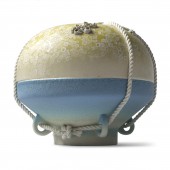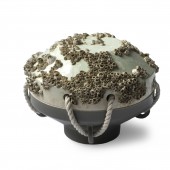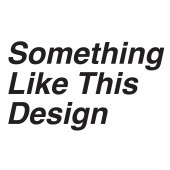Intertidal Deployment Objects Sculptural Design Concept by Trygve Faste and Jessica Swanson |
Home > Winners > #66513 |
 |
|
||||
| DESIGN DETAILS | |||||
| DESIGN NAME: Intertidal Deployment Objects PRIMARY FUNCTION: Sculptural Design Concept INSPIRATION: The design of these pieces was informed by the constraints of cultivating marine life growth, as well an aesthetic exploration of nautical hardware and maritime equipment to generate a vocabulary of shapes. Barnacles and their prolific growth are considered by most in the marine world to be a fouling organism. We were excited to embrace their industrious nature to highlight their beauty and call into question the common use of toxic paints. UNIQUE PROPERTIES / PROJECT DESCRIPTION: The Intertidal Deployment Objects utilize the marine environment as collaborative partner to generate dynamic ceramic surfaces. We were particularly interested to work with barnacles, as they are uniquely complex and beautiful. Our concept was to design a modular system of forms that are interchangeable so that one section can be submerged into the ocean to grow marine life and then be removed and assembled into a completed piece. OPERATION / FLOW / INTERACTION: This object primarily functions on a conceptual level, and the end result is sculptural. Some of the forms can be opened and used for storage, or as a vase, and the primary purpose of the objects are to generate interest in the idea of working collaboratively with natural elements in the creation of design. PROJECT DURATION AND LOCATION: This project was conducted from 2013 until 2017 though some aspects of the project continue to this date. The project is based at our studio in Eugene Oregon, and the barnacles were grown in Coos Bay and Penn Cove. FITS BEST INTO CATEGORY: Fine Arts and Art Installation Design |
PRODUCTION / REALIZATION TECHNOLOGY: Materials: High-Fire Ceramics, Cotton Rope, Barnacles Technology: Barnacle Growth Submersion SPECIFICATIONS / TECHNICAL PROPERTIES: Each piece varies slightly in dimension. The basic size is 11 inces tall and 10 inches wide. TAGS: Ceramic, Barnacle, Intertidal, Deployment, Art, Design, Conceptual, Nautical RESEARCH ABSTRACT: The most difficult part of this project was figuring out how to grow the barnacles in a safe and predictable way. This required testing many marine environments from Coos Bay Oregon to Whidbey Island Washington, USA. We tested many approaches and ultimately discovered that the best method was to submerge crates off of docks at particular times of the year with the ceramics firmly attached inside. We also had to test the form and surface treatment of the ceramics. CHALLENGE: Once we knew how to reliably grow the barnacles and what types of surfaces they would adhere to, we then needed to develop forms that would be appropriate to the concept of the piece, and allow us to use the barnacles in a controlled and aesthetic manner. This created many constraints as to the form and assembly method we would ultimately decide on. Because the barnacles are very fragile this posed a considerable challenge. ADDED DATE: 2018-02-28 17:15:56 TEAM MEMBERS (2) : Trygve Faste and Jessica Swanson IMAGE CREDITS: Image #1 Blake Hampton Image #2 Blake Hampton Image #3 Trygve Faste Image #4 Blake Hampton Image #5 Blake Hampton PATENTS/COPYRIGHTS: Design copyright Trygve Faste and Jessica Swanson, 2015, USA |
||||
| Visit the following page to learn more: http://www.somethinglikethisdesign.com | |||||
| AWARD DETAILS | |
 |
Intertidal Deployment Objects Sculptural Design Concept by Trygve Faste and Jessica Swanson is Winner in Fine Arts and Art Installation Design Category, 2017 - 2018.· Read the interview with designer Trygve Faste and Jessica Swanson for design Intertidal Deployment Objects here.· Press Members: Login or Register to request an exclusive interview with Trygve Faste and Jessica Swanson. · Click here to register inorder to view the profile and other works by Trygve Faste and Jessica Swanson. |
| SOCIAL |
| + Add to Likes / Favorites | Send to My Email | Comment | Testimonials | View Press-Release | Press Kit |
Did you like Trygve Faste and Jessica Swanson's Fine Art Design?
You will most likely enjoy other award winning fine art design as well.
Click here to view more Award Winning Fine Art Design.








